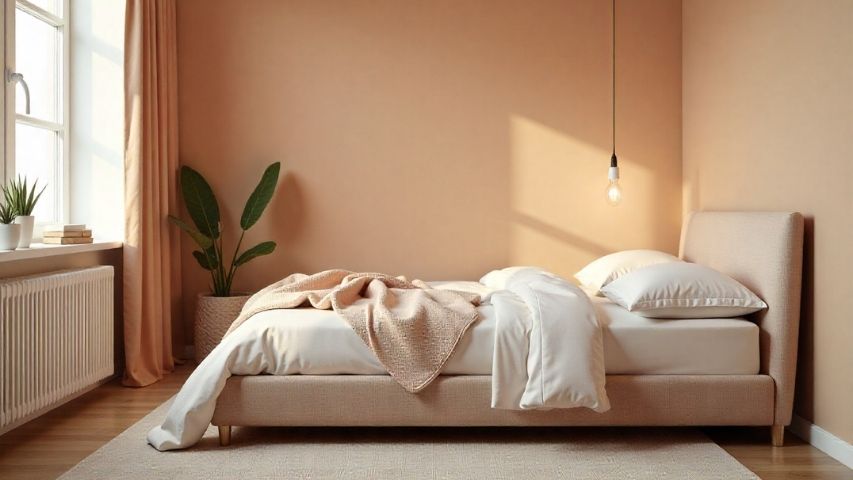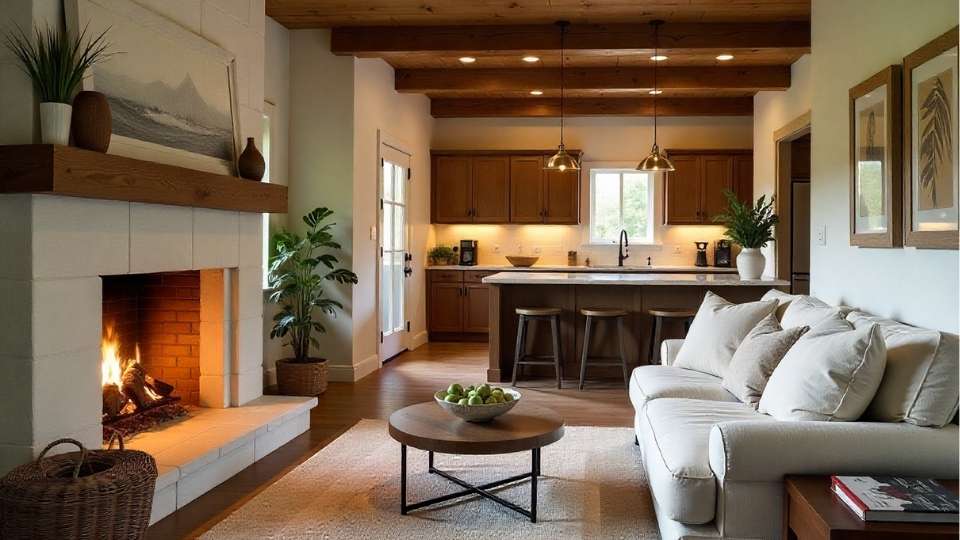Have you ever looked at an old, worn-out piece of furniture and thought, “What a waste”? Well, you’re not alone. With some creativity and elbow grease, you can transform those discarded items into stunning, functional pieces that are eye-catching and earn you a tidy profit. Welcome to the world of furniture flipping, where DIY enthusiasts, home decorators, and the upcycling community come together to turn trash into treasure. This blog post will guide you through the ins and outs of furniture flipping, offering tips, techniques, and insights to help you succeed in this rewarding hobby or side hustle.
Whether you’re a seasoned DIYer or utterly new to the craft, there’s something here for everyone. We’ll cover sourcing furniture, prepping pieces for transformation, selecting the right tools and materials, and marketing your finished masterpieces. By the end of this post, you’ll have all the knowledge you need to start flipping furniture like a pro.
Why Flip Furniture?
Economic Benefits
Flipping furniture can be a lucrative venture. With initial investments as low as a few dollars for a garage sale find, you can create pieces that sell for hundreds. The key is to spot potential in undervalued items and elevate them with your creative touch. Many people are willing to pay a premium for unique, handmade items that tell a story, making this a potentially profitable venture.
Environmental Impact

In a world increasingly concerned about sustainability, upcycling old furniture is a way to contribute positively to the environment. Rescuing items from landfills reduces waste and gives new life to forgotten pieces. This aligns with a growing trend towards sustainable living and environmentally friendly practices.
Creative Expression
For many, furniture flipping is about making money and expressing creativity. Each piece is a blank canvas, waiting for your artistic vision to bring it to life. This process allows endless experimentation with colors, textures, and styles, offering a unique and satisfying outlet for your creative instincts.
Finding the Perfect Piece
Thrift Stores and Yard Sales
Thrift stores and yard sales are treasure troves for potential flips. These venues often offer furniture at low prices and are prime spots for finding unique and vintage items. Look for solid wood pieces, as they are more durable and easier to refinish.
Online Marketplaces
Websites like Craigslist, Facebook Marketplace, and OfferUp provide platforms where sellers often list furniture at a fraction of retail prices. These platforms are convenient for browsing from home and allow you to set alerts for items of interest.
Curbside Finds
Remember to consider the value of curbside finds. Many people dispose of furniture that is still in excellent condition, offering free opportunities for passionate flippers. Always inspect pieces for damage and consider how much effort will be needed for restoration.
Prepping Your Furniture

Cleaning and Assessing
Before starting any transformation, thoroughly clean and assess the furniture. Remove any dust, grime, or old paint that could interfere with your work. This step is crucial for understanding the piece’s potential and what repairs it might require.
Repair and Sanding
Minor repairs can make a huge difference. Tighten screws, glue joints, and fill in any holes or scratches. Sanding is essential for a smooth finish, especially if you plan to paint or stain the furniture. Remember to sand in the direction of the wood grain for the best results.
Priming for Painting
Priming is an often overlooked step that is critical to achieving a professional finish. Use a high-quality primer to prepare the surface, ensuring better paint adhesion and a more vibrant final appearance. This step is crucial when working with darker woods or pieces with existing stains.
Choosing Your Style

Modern and Minimalist
Opt for a sleek, modern look for clean lines, neutral colors, and minimal embellishments. This style works well in contemporary homes and appeals to those who prefer simplicity and functionality.
Vintage Charm
Capture the charm of yesteryear with vintage styles. Use pastel colors, distressed finishes, and antique hardware to evoke nostalgia. This style is perfect for creating cozy, inviting spaces with a touch of history.
Bold and Eclectic
If you love making a statement, bold and eclectic styles are for you. Mix vibrant colors, patterns, and textures to create outstanding pieces. This approach is ideal for those who enjoy pushing design boundaries and adding personality to their surroundings.
Essential Tools and Materials
Basic Tools
Invest in a few essential tools to make your furniture flipping more efficient. Good screwdrivers, a hammer, and a cordless drill are necessary for most projects. These tools will help you with disassembly, construction, and repairs.
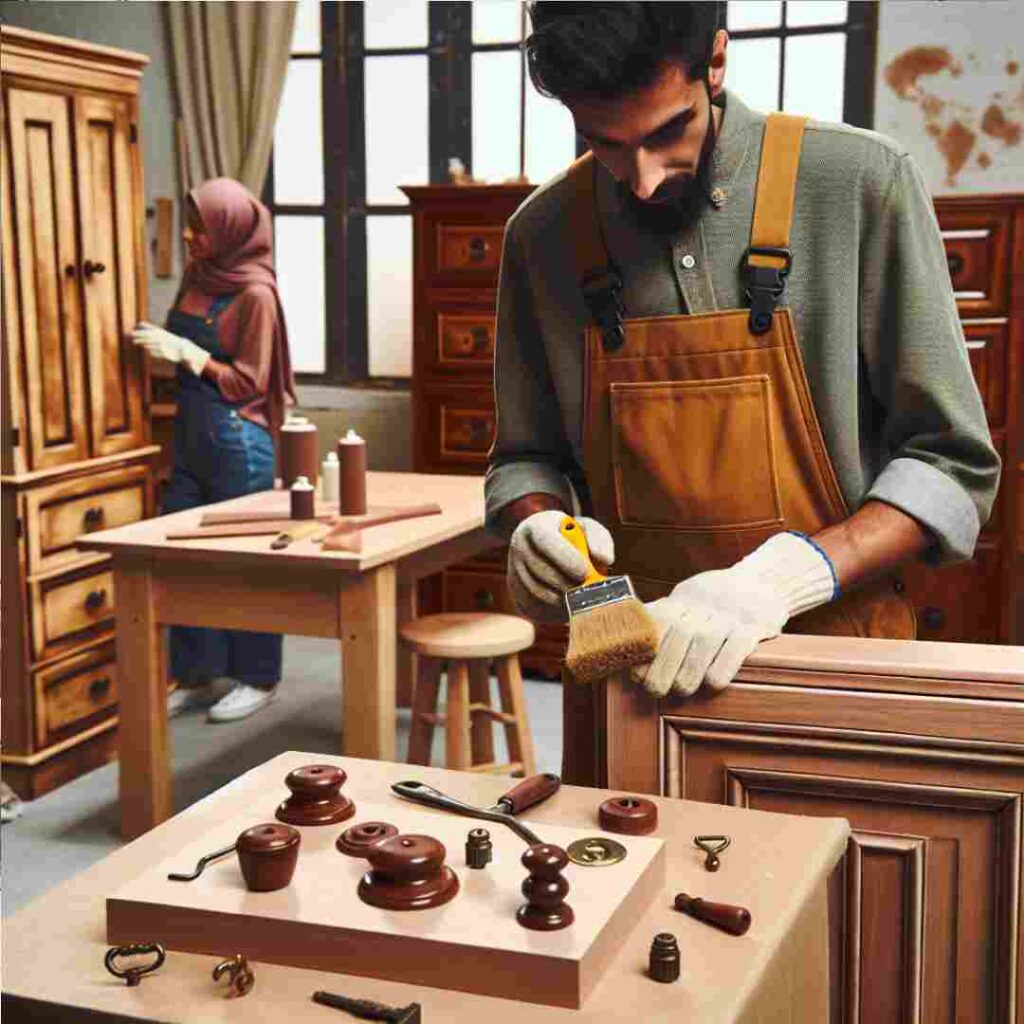
Paints and Brushes
High-quality paints and brushes can make all the difference in your finished product. Choose paints designed for furniture to ensure durability, and invest in various brush sizes for detailed work.
Hardware and Accessories
Updating hardware is a simple way to elevate a piece. Consider replacing knobs, handles, and hinges to match your chosen style. Visit hardware stores or search online for unique options that add a finishing touch to your furniture.
Techniques for a Professional Finish
Distressing for Character
Distressing is a technique that adds character and age to furniture. Use sandpaper or a wire brush to gently remove paint or stains from edges and corners, creating a well-loved look.
Staining for Depth
Staining enhances the natural beauty of wood, adding depth and warmth. Choose a stain that complements the wood’s grain and apply it evenly using a brush or cloth for a rich, polished appearance.
Painting for Impact
Painting is a versatile technique that can completely transform a piece. Whether you prefer bold colors or soft pastels, paint allows you to tailor furniture to your style. Remember to apply multiple coats for the best coverage.
Pricing and Selling Your Creations
Setting the Right Price
Pricing your flipped furniture can take time and effort. Consider the cost of materials, the time spent on the project, and the market demand. Research similar items to gauge the going rate and ensure your pricing is competitive yet fair.
Taking Quality Photos
Quality photos are crucial for selling your pieces online. Use natural lighting and a neutral background to showcase your furniture’s features. Highlight any unique details and take multiple angles to give potential buyers a comprehensive view.
Marketing Your Pieces
Promote your flipped furniture through social media, online marketplaces, and local events. Create engaging posts that tell the story of each piece and connect with potential buyers. Building a brand around your work can help attract a loyal customer base.
Building Your Furniture Flipping Brand
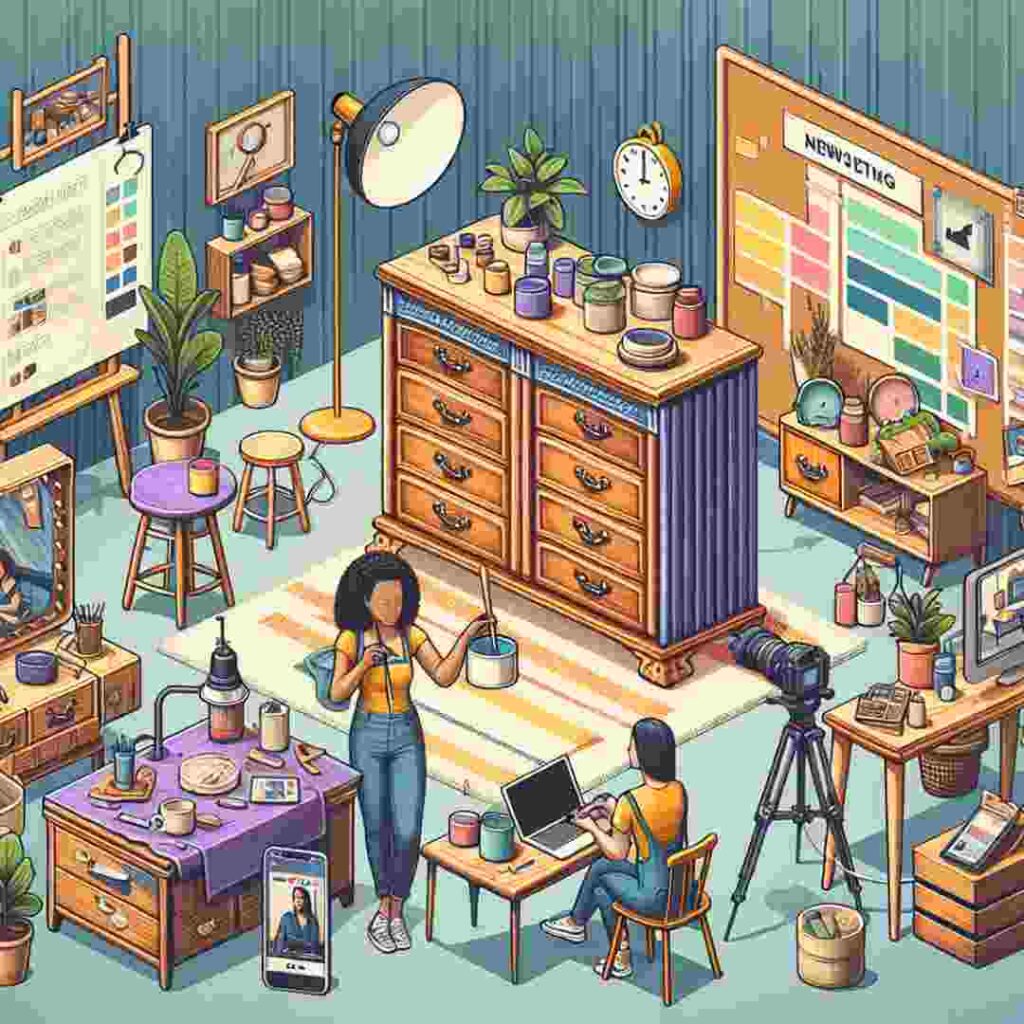
Creating a Unique Identity
Develop a unique style that sets your work apart. Whether it’s a specific color palette or a signature technique, having a recognizable brand will help you stand out in the market.
Connecting with Your Audience
Engage with your audience through social media, blogs, and newsletters. Share behind-the-scenes content, tips, and the inspiration behind your pieces. Building a community around your brand fosters customer loyalty.
Expanding Your Reach
To expand your reach, consider collaborating with local businesses or participating in craft fairs and markets. Networking with other furniture flippers and sharing your experiences can open new opportunities and inspire growth.
Overcoming Challenges
Time Management
Balancing multiple projects can be challenging. Create a schedule that allocates time for sourcing, flipping, and selling furniture. Prioritize tasks and set realistic deadlines to ensure efficient workflow.
Creative Blocks
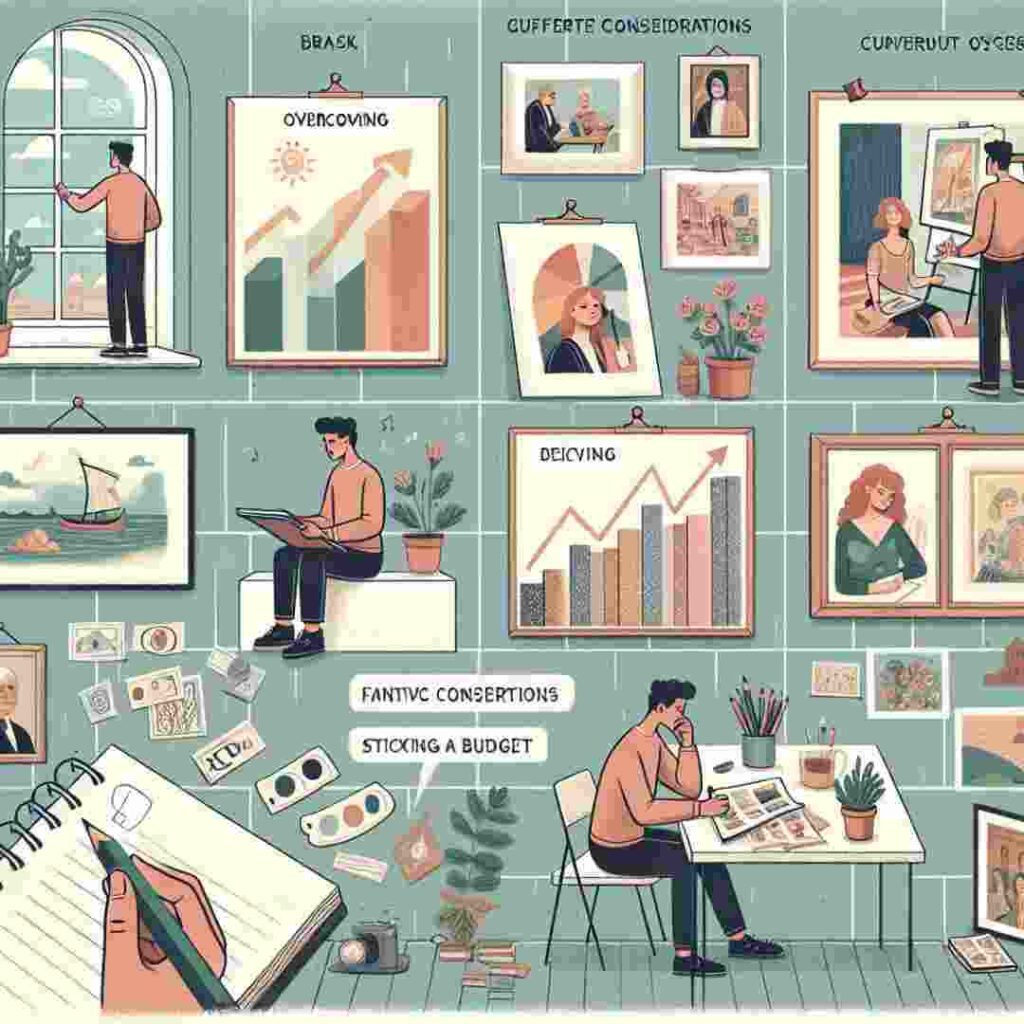
Creative blocks can happen to anyone. Take breaks, explore new styles, and seek inspiration from fellow flippers. Stepping away from a project can often lead to fresh ideas and renewed motivation.
Financial Considerations
Track your expenses and profits to ensure your flipping venture remains viable. Set a budget for each project and stick to it. Being mindful of your finances helps you make informed decisions and avoid overspending.
Learning and Growing
Continuous Skill Development
Keep honing your skills by taking online courses, attending workshops, and learning from other flippers. Experiment with new techniques and materials to stay ahead of trends and expand your expertise.
Staying Informed
Stay informed about industry trends and market demands by following furniture flipping blogs, joining online forums, and connecting with other flippers to exchange ideas and insights.
Setting Goals
Set achievable goals to keep your flipping projects on track. Whether completing a certain number of pieces per month or expanding your brand, having clear objectives helps you stay focused and motivated.
Conclusion
Furniture flipping is an exciting and rewarding endeavor. It combines creativity, sustainability, and entrepreneurship, offering endless possibilities for those willing to put in the effort. Following the tips and techniques outlined in this post, you can transform discarded items into beautiful, functional pieces that delight customers and enhance your home.
We hope this guide has inspired you to explore the world of furniture flipping. With determination and creativity, you can turn any piece into a masterpiece. Keep learning, experimenting, and growing; you’ll soon discover the joy and satisfaction of flipping furniture. For more resources and community support, consider joining online forums or attending local workshops to connect with fellow flippers and continue your flipping journey. Happy flipping!








